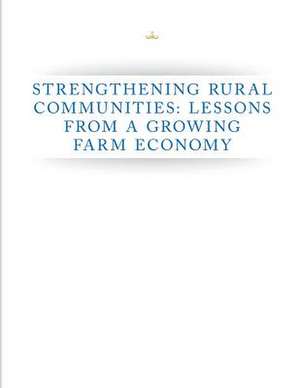Strengthening Rural Communities
Autor Executive Office of the Presidenten Limba Engleză Paperback
Preț: 92.96 lei
Nou
Puncte Express: 139
Preț estimativ în valută:
17.79€ • 18.46$ • 14.87£
17.79€ • 18.46$ • 14.87£
Carte disponibilă
Livrare economică 24 februarie-10 martie
Preluare comenzi: 021 569.72.76
Specificații
ISBN-13: 9781502474636
ISBN-10: 1502474638
Pagini: 30
Dimensiuni: 216 x 279 x 2 mm
Greutate: 0.1 kg
Editura: CREATESPACE
ISBN-10: 1502474638
Pagini: 30
Dimensiuni: 216 x 279 x 2 mm
Greutate: 0.1 kg
Editura: CREATESPACE
